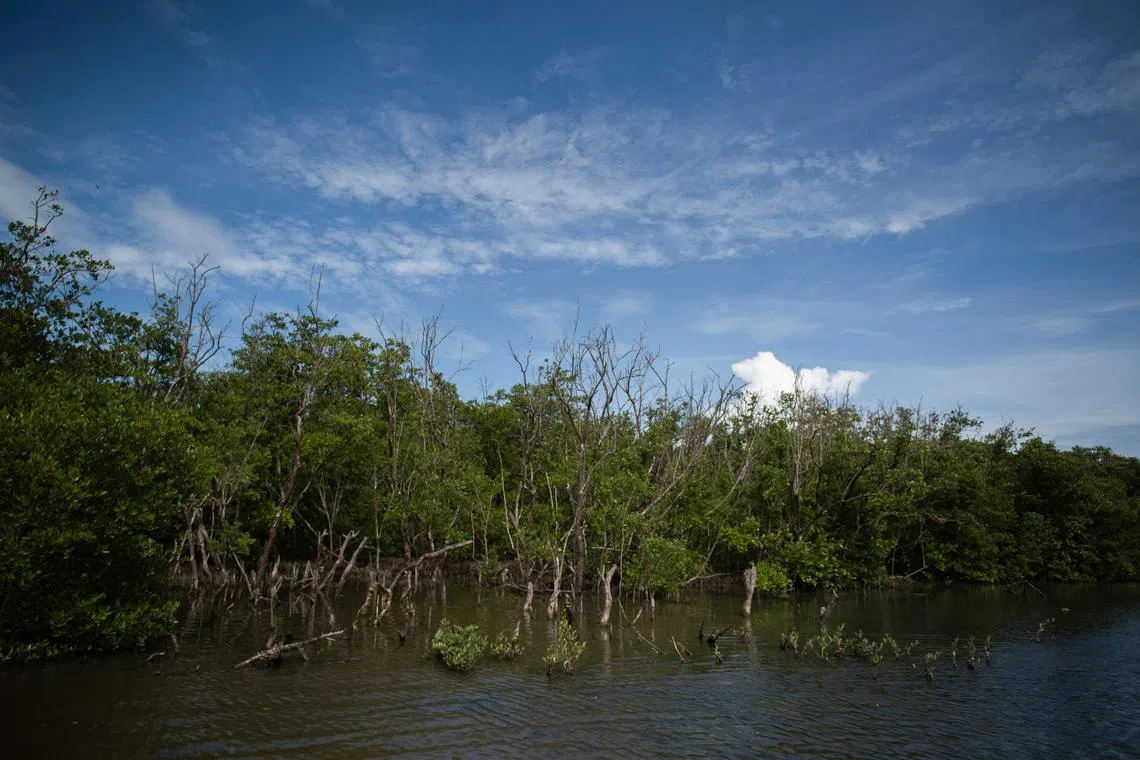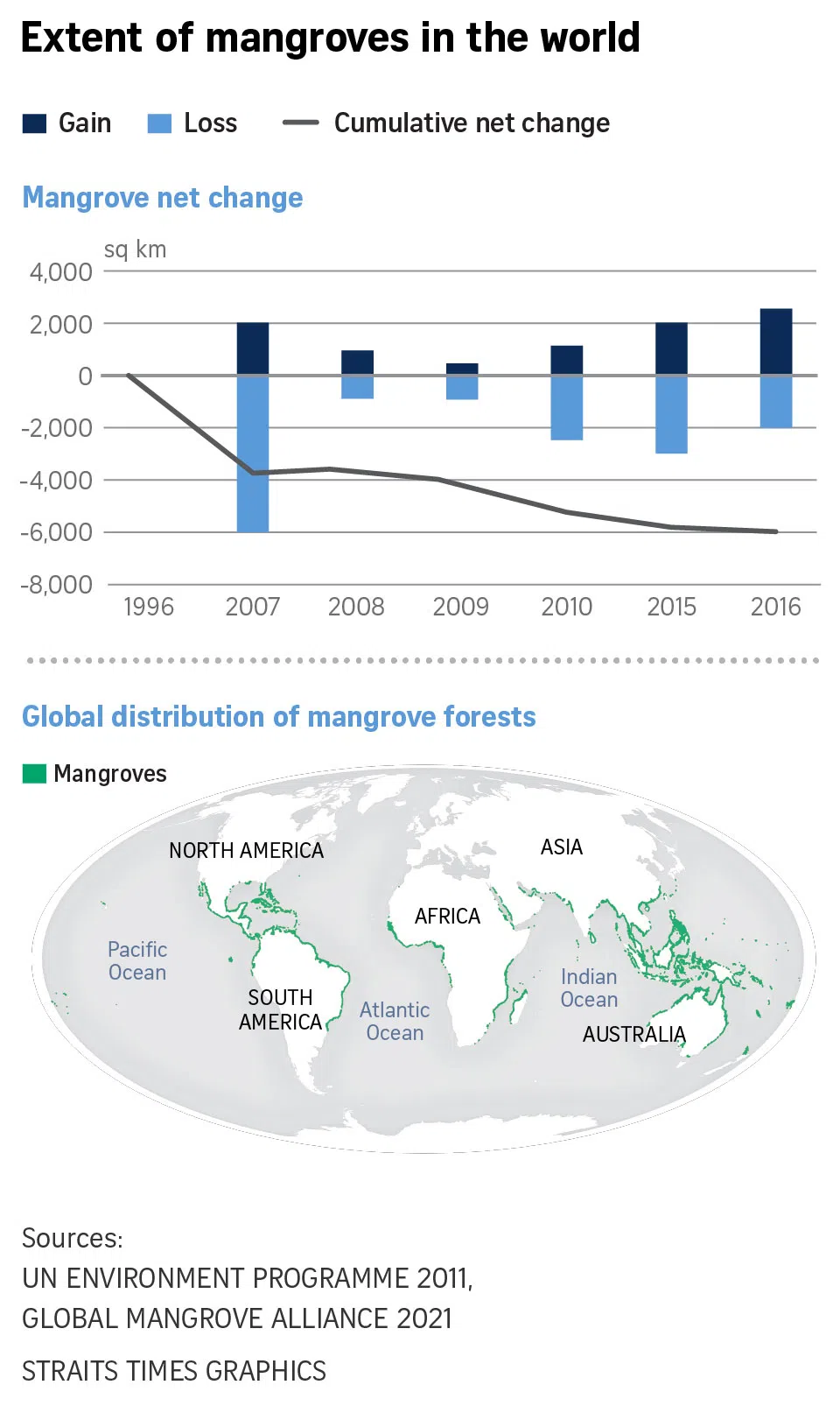Mangrove alliance formed at COP27
Sign up now: Get insights on Asia's fast-moving developments

Mangrove cover has declined by 35 per cent globally in the past three decades.
PHOTO: AFP
Follow topic:
Bengaluru - India became one of the first countries along with Australia, Japan, Spain and Sri Lanka to join the Mangrove Alliance for Climate at COP27, the 2022 United Nations climate summit in Sharm El-Sheikh, Egypt.
The international alliance of governments, led by the United Arab Emirates (UAE) and Indonesia, hopes to save mangrove forests.
Mangroves are trees and shrubs that live in intertidal water in coastal areas, and are proven nature-based solutions to a changing climate. They store immense amounts of carbon, four times faster than land forests. They also provide flood protection worth US$65 billion (S$89 billion) per year, reduce coastal erosion and are habitats for fish, crustaceans and wildlife.
The Mangrove Alliance for Climate seeks to “scale up and accelerate the conservation and restoration of mangrove ecosystems for the benefit of communities worldwide”, said Ms Mariam Mohammed Almheiri, the UAE’s Minister of Climate Change and the Environment, while launching the alliance on Nov 8.
The UAE intends to plant three million mangroves in the next two months as part of its pledge to plant 100 million mangroves by 2030.
India’s Minister for Environment, Forest and Climate Change Bhupender Yadav said conserving and planting these carbon-rich mangroves in the tropics was the “best option to fight against… sea-level rise and increasing frequency of natural calamities like cyclones and storm surges”.
In 2020, there were around 147,000 sq km of mangroves in the world, according to a 2022 report by the Global Mangrove Alliance, a collective of scientists, non-profits, industry and local communities.
The most extensive mangroves are in South-east Asia, with Indonesia alone accounting for a fifth of the global total. Together, Indonesia, Brazil, Australia, Mexico and Nigeria host almost half the world’s mangroves, according to the same report.
South Asia accounts for 6.4 per cent of the global mangrove cover, of which over 50 per cent is in India.
The Sunderbans in east India is the world’s largest contiguous mangrove forest, but is losing its density due to salinity and cyclones.
Mangrove cover has declined by 35 per cent globally in the past three decades. Asia has lost mangroves faster than the rest of the world in the last two decades, due to pollution
Mr Yadav said India had joined the alliance to contribute its “experience in mangrove restoration” and learn from other nations about “cutting-edge solutions”.
The Forest Survey of India of 2021 found that mangrove cover (4,975 sq km) had increased by 1.10 per cent compared with 2020 due to fishing community-led conservation, as well as protective measures and alternative livelihood introduced by the government. But scientists have criticised the Indian government for achieving favourable findings by diluting the definition of a forest (less tree density, and the inclusion of parks, tea and coffee plantations, and so on).
Conservationist groups noted that the intergovernmental alliance on mangroves works on a voluntary basis.
The member countries will decide on their own commitments and deadlines about planting and restoring mangroves, and the group does not hold parties accountable.
It will, however, enable the countries to share expertise and protect critical coastal ecosystems.



